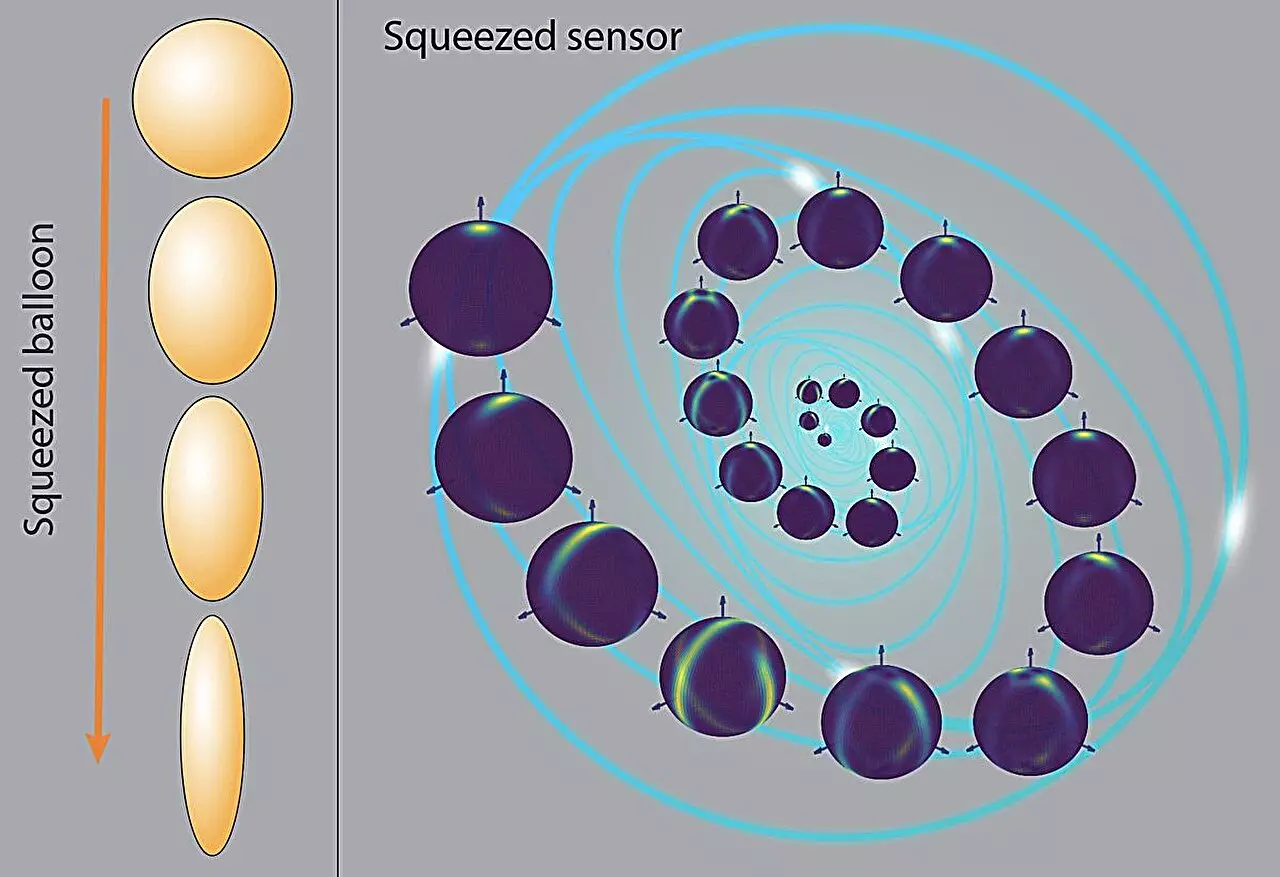Quantum mechanics, the underlying framework of modern physics, holds profound implications for how we understand and manipulate the physical world. Among its fascinating phenomena is the concept of quantum squeezing, a technique that has recently garnered attention for its potential to enhance measurement precision in various applications. This article delves into the intricate nature of quantum squeezing, its theoretical foundations, and its implications for future technological advancements.
At its core, quantum squeezing involves a delicate balance of uncertainty, fundamentally based on Heisenberg’s uncertainty principle. This principle states that certain pairs of physical properties, notably position and momentum, cannot be simultaneously measured with arbitrary precision. In practice, quantum squeezing allows for a redistribution of uncertainty within a quantum system: by precisely measuring one aspect—such as position—uncertainty in the other aspect—in this case, momentum—increases. This process is akin to altering the shape of a balloon; squeezing one area compresses it while expanding another.
The implications of this phenomenon are significant. With quantum squeezing, scientists can enhance the accuracy of measurements in scenarios where precision in a single variable is paramount. A prime example can be seen in atomic clocks, where minimizing uncertainty in timekeeping can lead to improvements in GPS technology and other time-sensitive applications. However, challenges arise when multiple variables are involved, requiring a more nuanced understanding of quantum systems.
Recent Advances in Quantum Measurement Techniques
A recent study led by Dr. Le Bin Ho from Tohoku University sheds light on the potential of quantum squeezing to improve precision in multi-variable measurements. The research, published in Physical Review Research, focused on the interactions between a three-dimensional magnetic field and an ensemble of identical two-level quantum systems. By delving into both theoretical frameworks and numerical models, Ho and his team aim to unpack the complexities of achieving maximum measurement precision in these multifaceted scenarios.
Despite advancements in theory, previous research has struggled to fully elucidate how quantum squeezing translates to precise measurements in practical settings. One key challenge has been the tendency for entanglement—a crucial resource for enhancing measurement—only to be fully realized in one direction. Dr. Ho’s investigation attempts to break new ground by addressing these limitations, paving the way for an understanding of how to enhance measurement capabilities involving multiple phases.
The implications of improved measurement precision via quantum squeezing extend far beyond the realm of fundamental physics. In applied sciences and engineering, quantum imaging techniques could yield sharper visuals that illuminate details previously obscured in research. Additionally, advancements in quantum radar technology imply a future with superior object detection capabilities, enhancing our interactions with the world around us.
In the field of biophysics, the potential for improved molecular and cellular measurement techniques could revolutionize medical diagnostics. Enhanced biosensors could lead to earlier detections of diseases, fostering a proactive approach to healthcare. Specifically, improvements in magnetic resonance imaging (MRI) could result in more accurate imaging that could transplant our understanding of various medical conditions.
Looking Ahead: Exploring the Future of Quantum Technologies
The findings from Dr. Ho’s research mark just the beginning of what promises to be a transformative journey in quantum measurement technology. As the field progresses, the challenge will be to comprehend how quantum squeezing mechanisms react in the presence of varying types of noise, which may hinder the clarity of measurements. By effectively countering these obstacles, researchers could unlock even greater precision.
Ultimately, as quantum mechanics continues to evolve, the integration of concepts like quantum squeezing into technology could herald a new era of understanding. Not only does this enhance our scientific comprehension, but it also propels us towards innovative solutions in sensing and imaging, potentially changing the landscape of technology as we know it. As Dr. Ho aptly summarises, this research is not merely a theoretical exercise, but a stepping stone towards illuminating the depth of quantum phenomena and their practical applications in the future.

